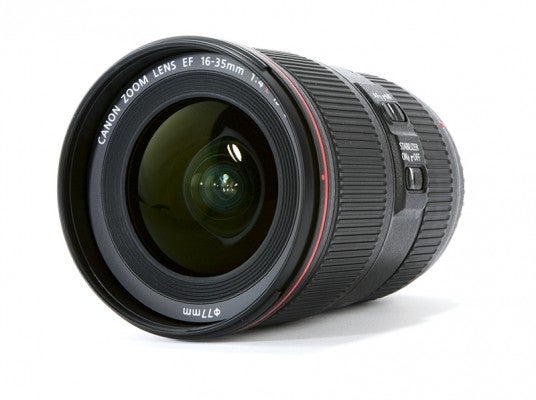Good extreme wideangle zoom lenses for full-frame cameras are not easy to find. Damien Demolder tests Canon’s latest to see if it is up to the job
Canon EF 16-35mm f/4L IS USM review
Canon EF 16-35mm f/4L IS USM review – Image quality

Image: While the vignetting of the 35mm end of the zoom might be moderate, a polariser filter had added to the effect here
When optics go to extremes, we are usually treated to an array of aberrations to inspect, and with wideangles such as this we should be on the lookout for the bending of straight lines, dark corners and the separation of colours, and a loss of sharpness at the frame edges.
Vignetting is a feature of images taken with this lens, no matter what the focal length or aperture. Wide apertures combined with the wider focal lengths produce the more dramatic effects, but even with the aperture closed to f/16 at the 35mm setting you can expect the corners of the frame to be about 0.2EV darker than the middle. Fortunately, in most scenes, darkening of up to 0.3EV will not be obvious, but in critical applications it will be noticeable, but also easily correctable for the small price of a bit of amplified noise in the corners.
The difference in edge and corner resolution is a characteristic that is more difficult to remedy, and in flat subjects the coma aberration is more noticeable. The onset of the loss of sharpness is quite sudden, though, and plays more of a part right in the corners of the frame at the widest focal lengths than it does along the diagonal path from the centre of the frame. As such, it affects a relatively small area of the frame.
Sharpness in the centre of the frame is excellent at all apertures and focal lengths, and it took some searching to find the chromatic fringing I had expected to see in the extremities of the frame.
Resolution
There is always some distance between edge and corner sharpness in this lens; the wider the focal
length and aperture, the greater that distance will be. Edge sharpness remains mostly constant, but the centre is best at f/8 and 16mm.

Shading
Corners darken by a noticeable 0.4EV at the widest setting of the lens, when used at f/4. Things improve with smaller apertures and longer focal lengths, but only to 0.2EV.


Curvilinear distortion
Good drawing is hard enough in a fixed wideangle lens, but in a zoom the problem is multiplied. Quite heavy barrelling turns to pincushion at about 24mm, which provides a relatively undistorted haven.







